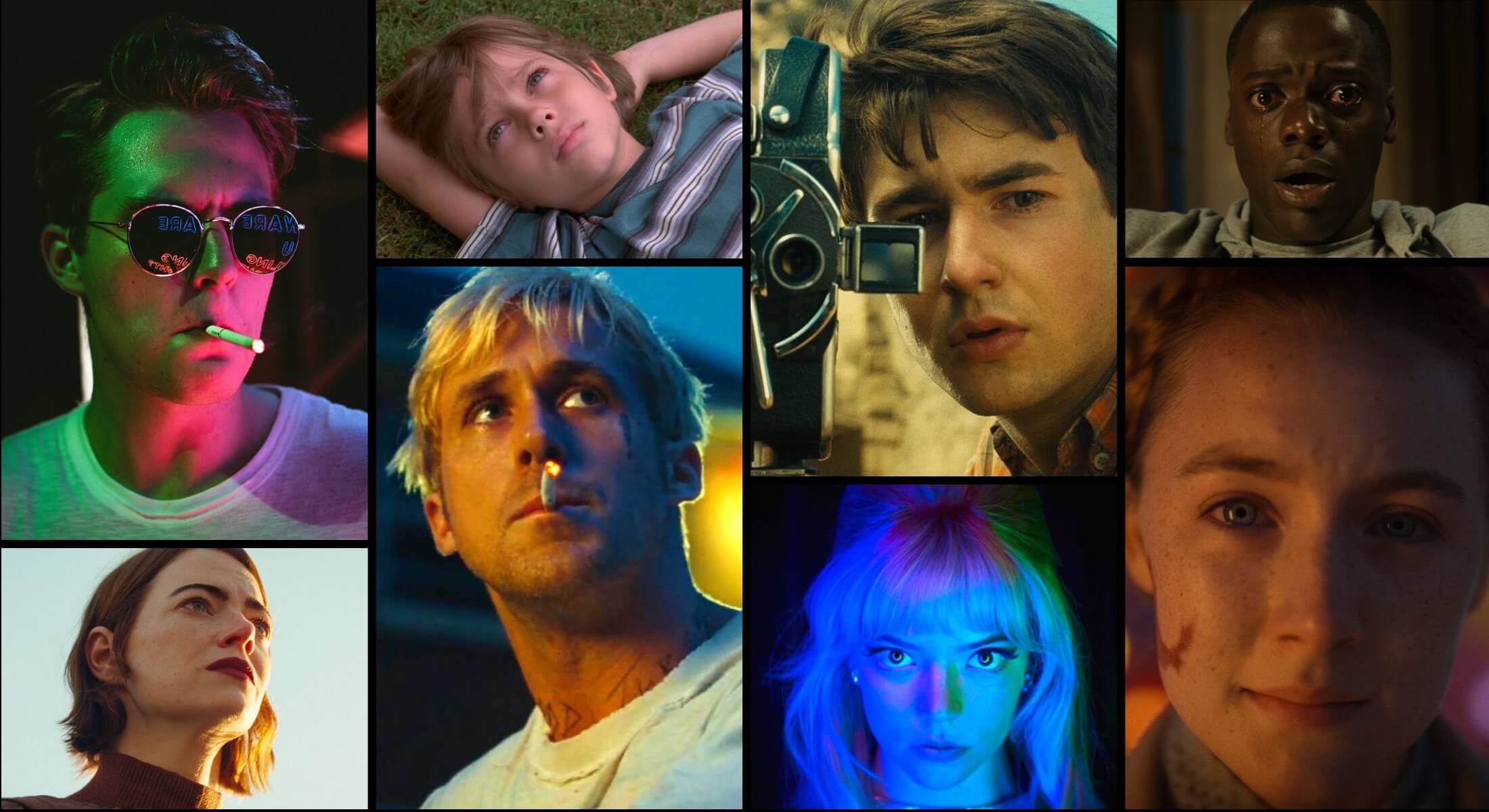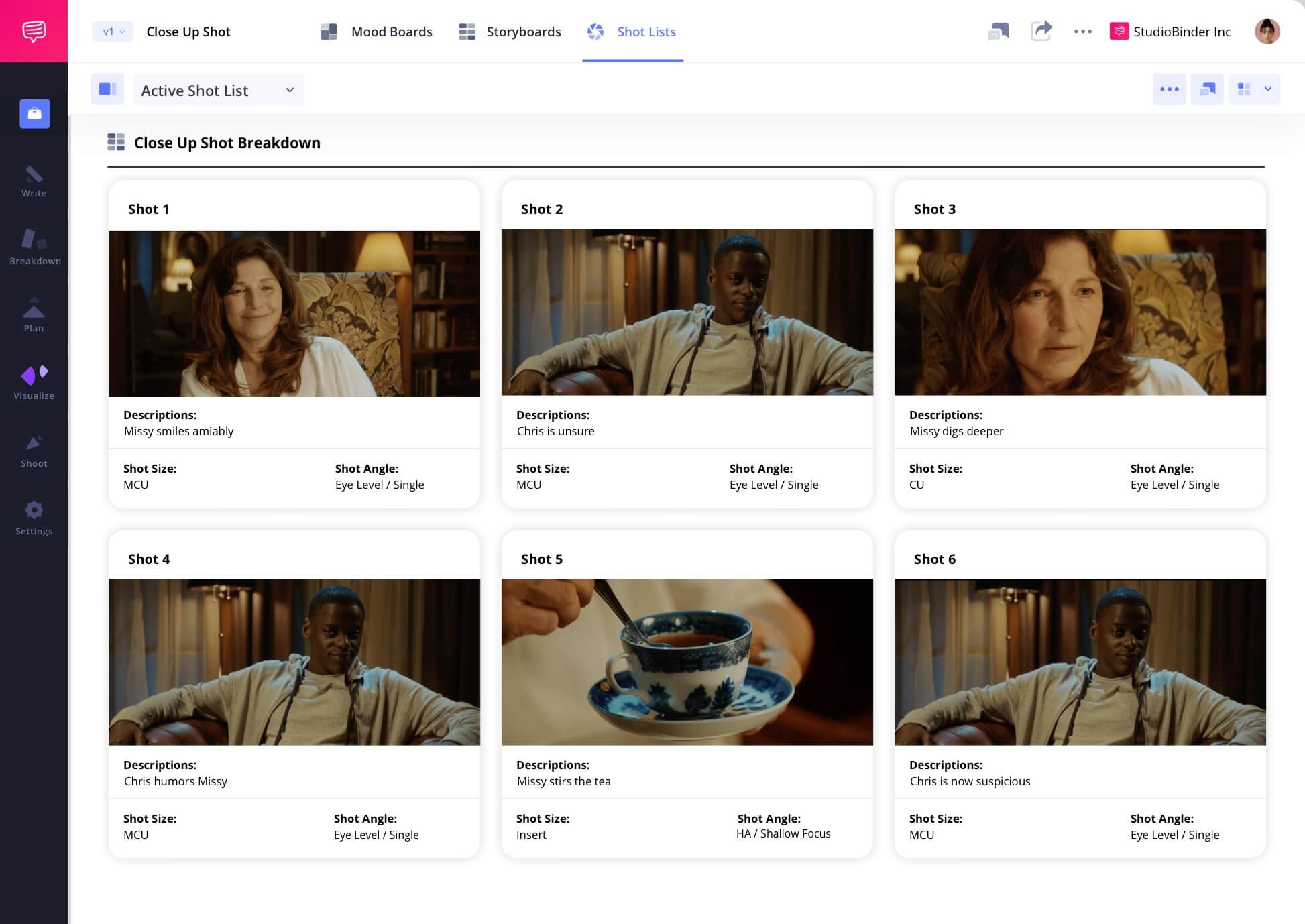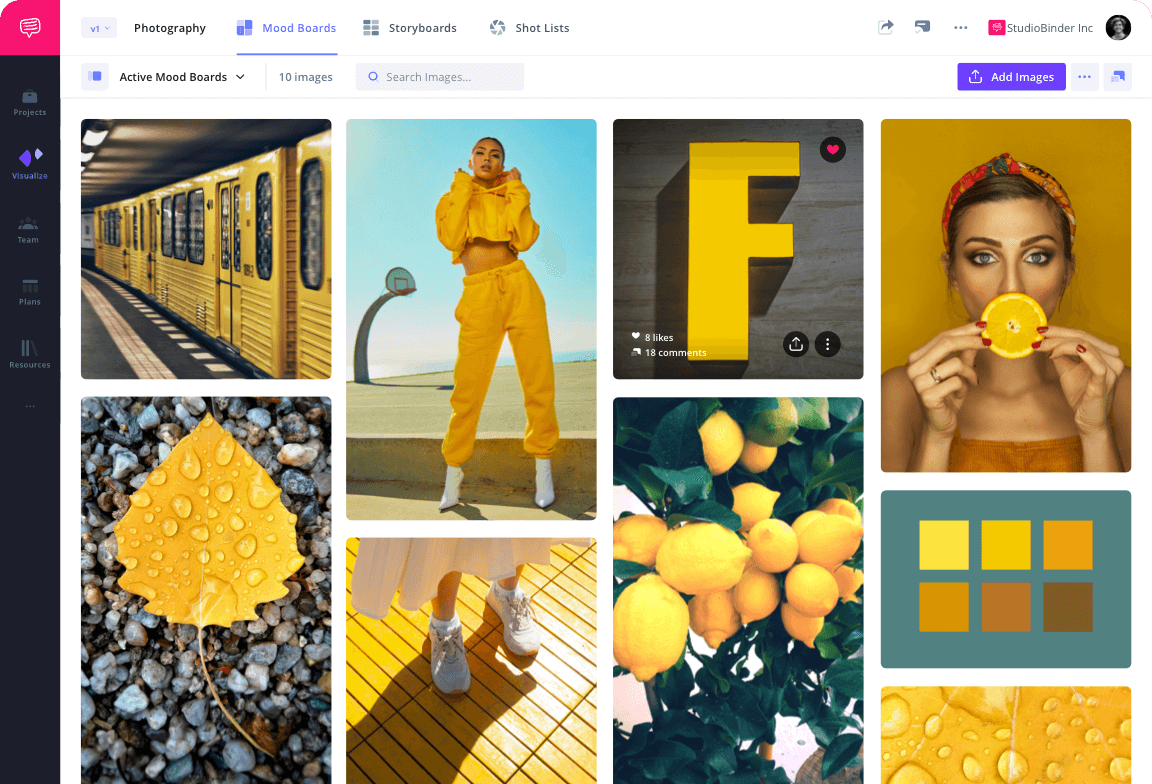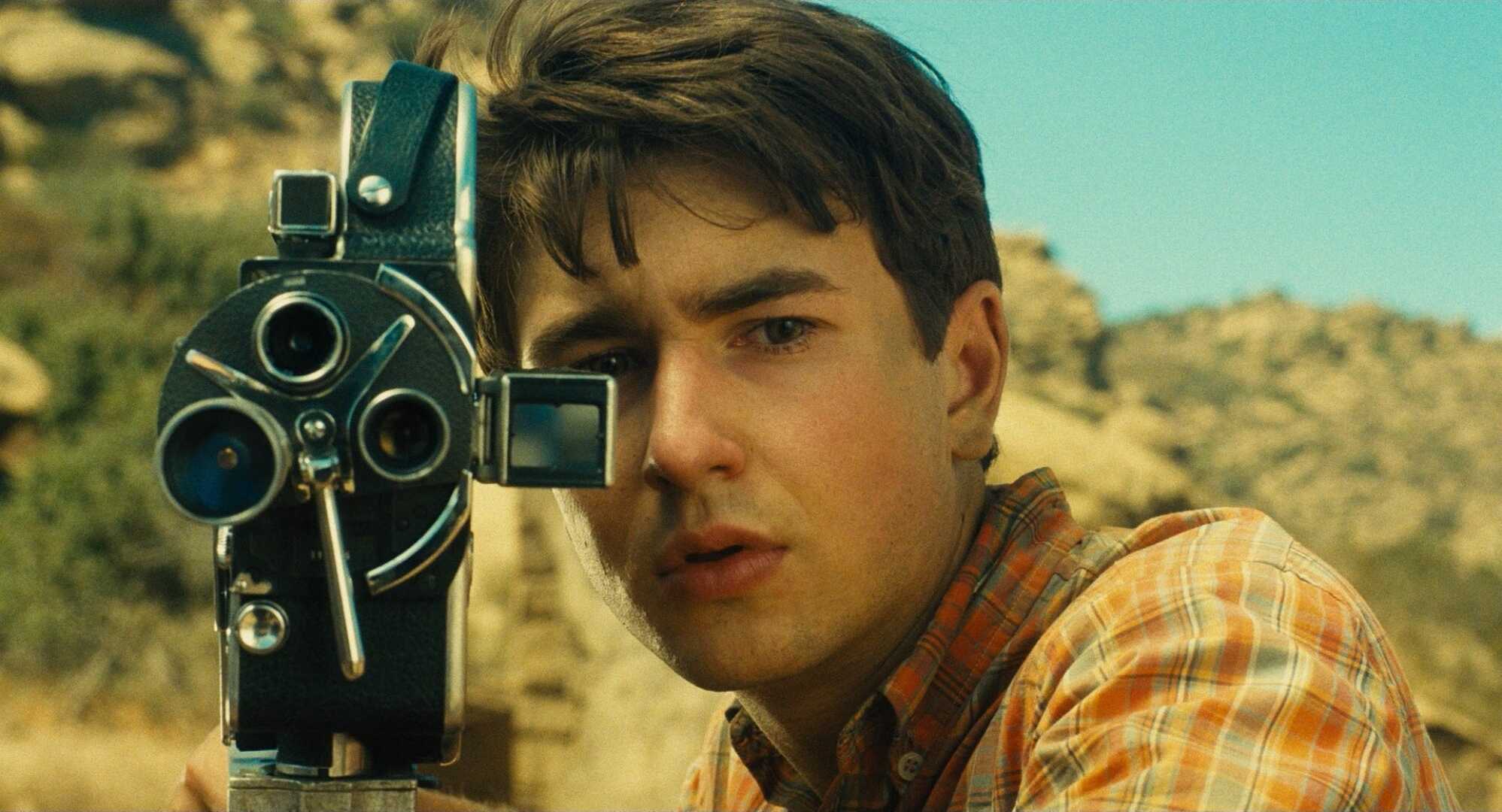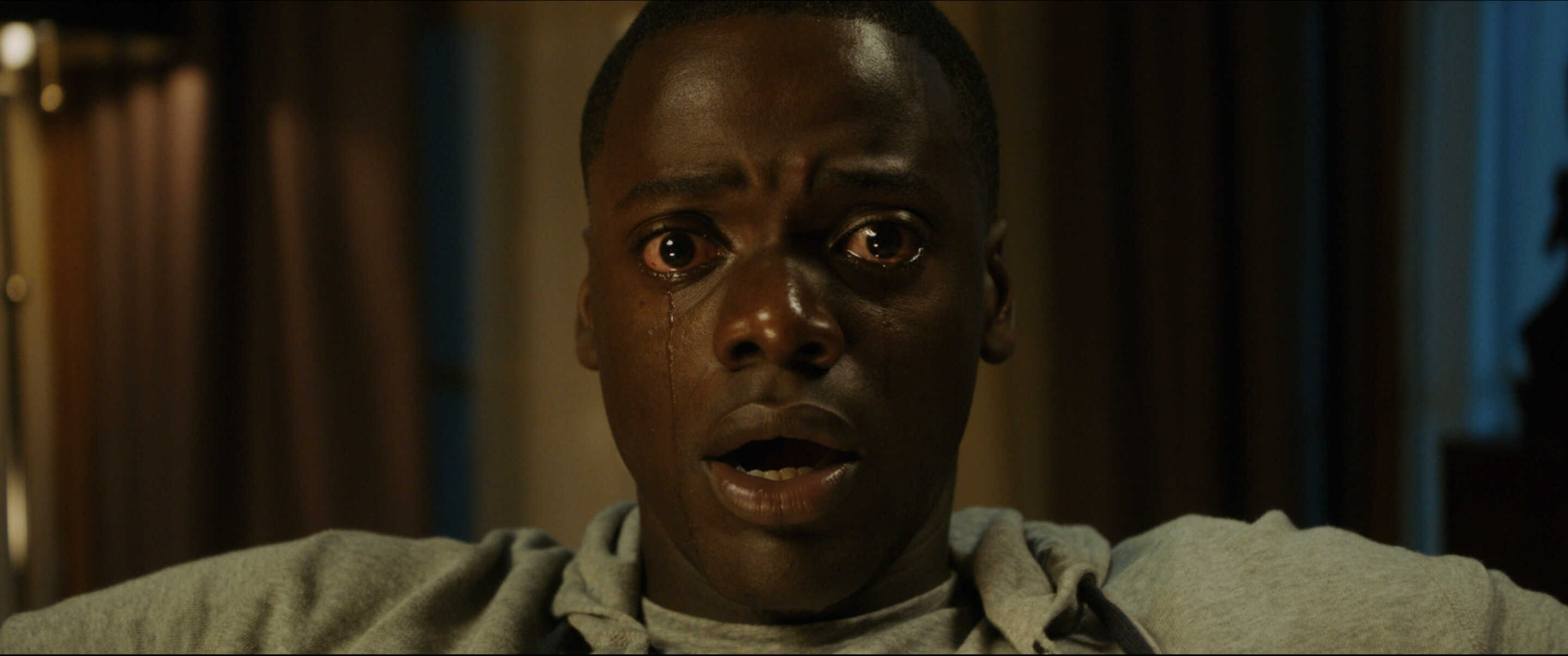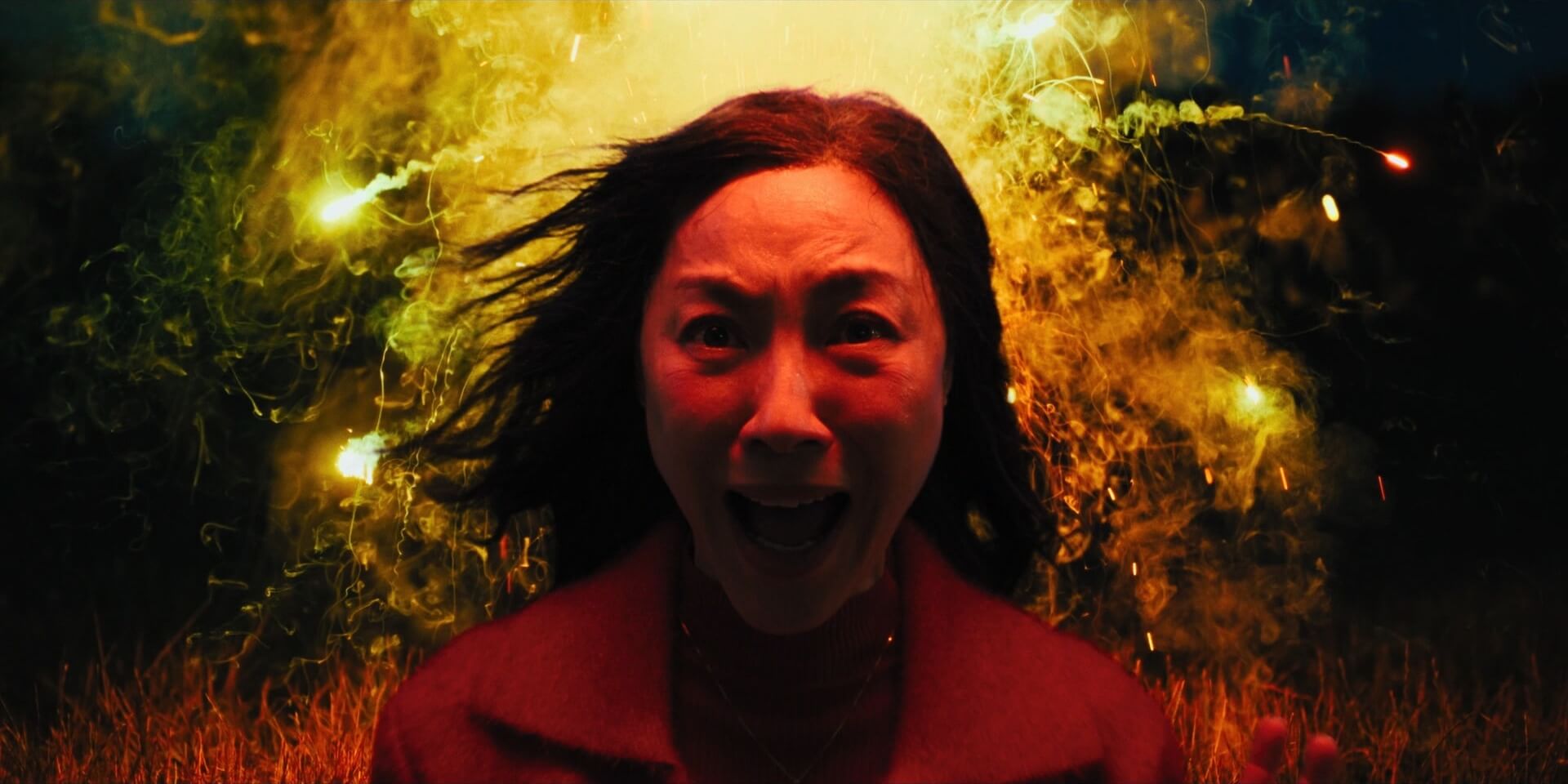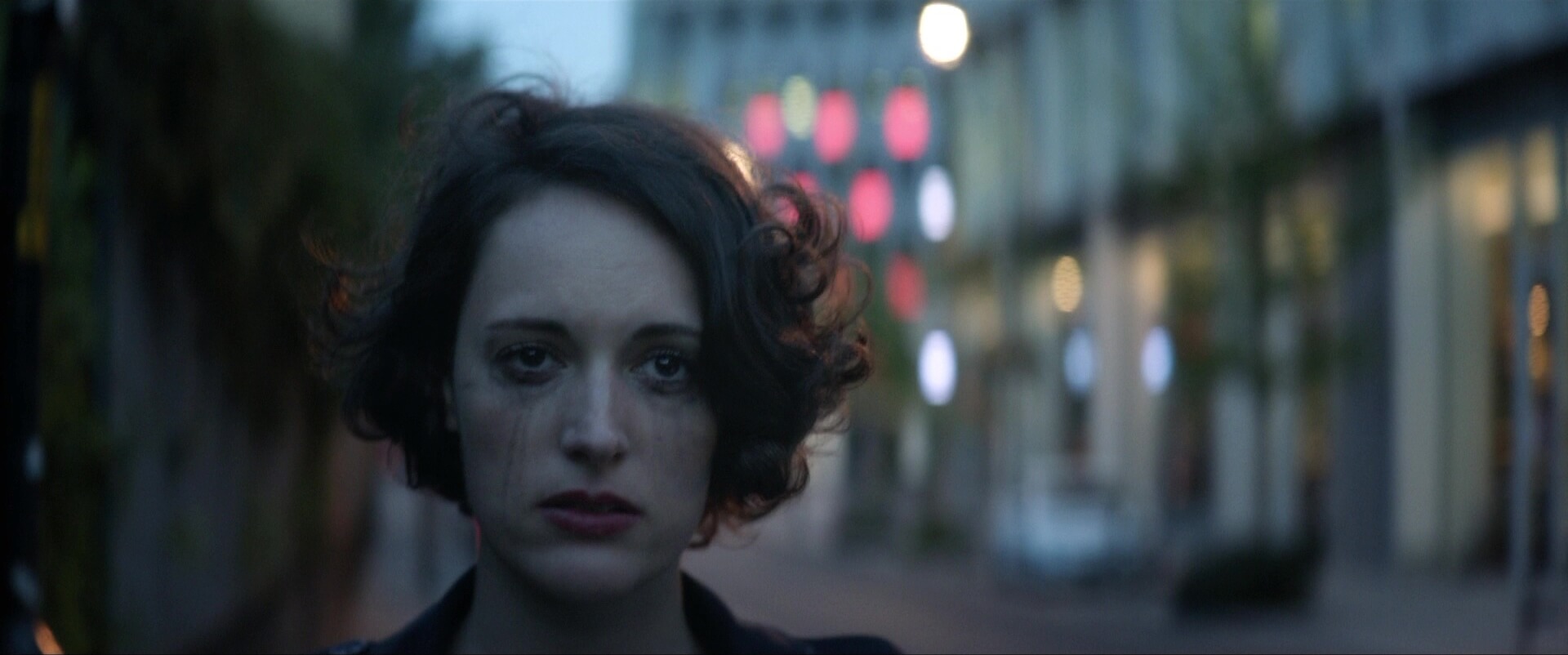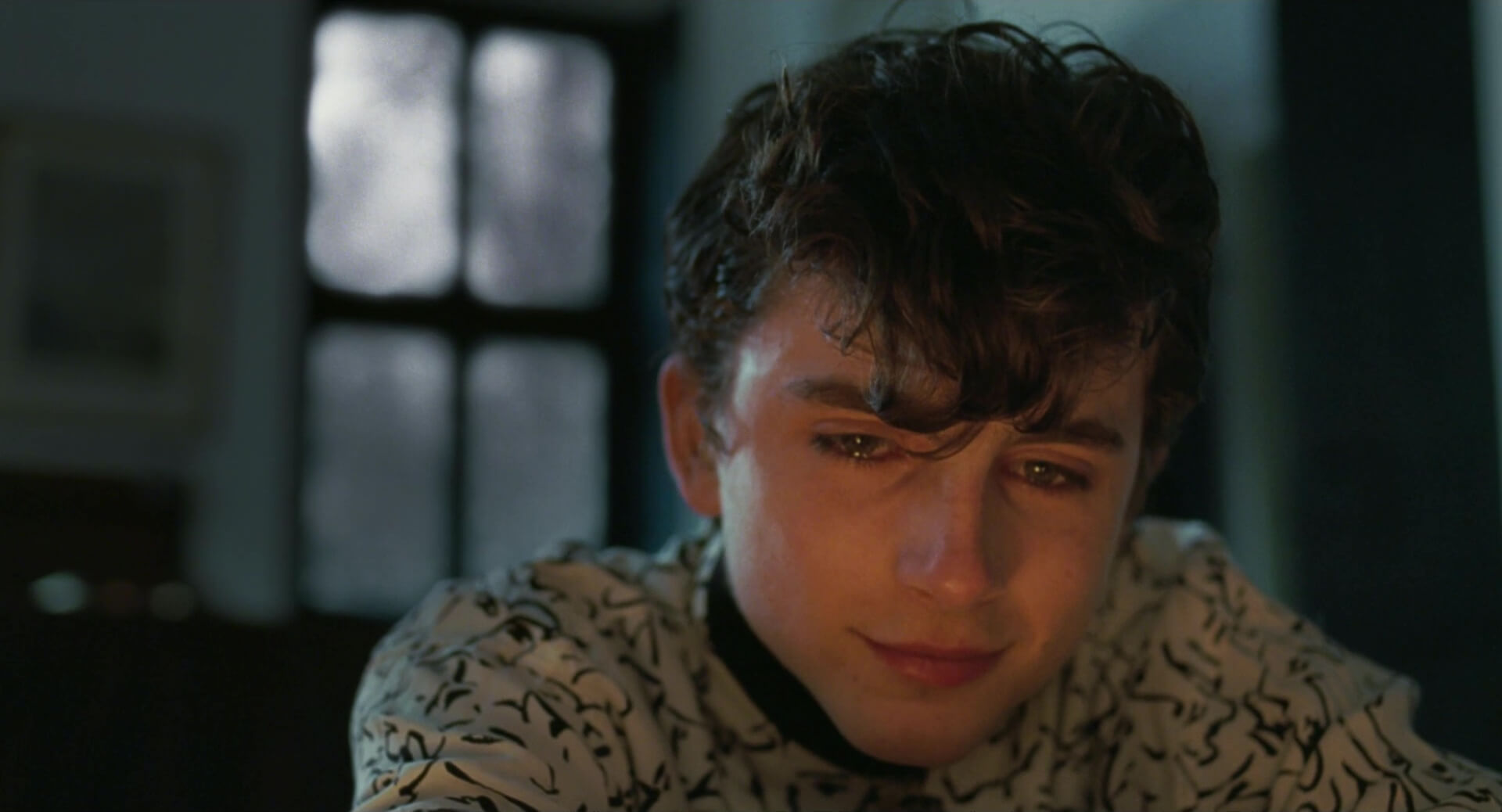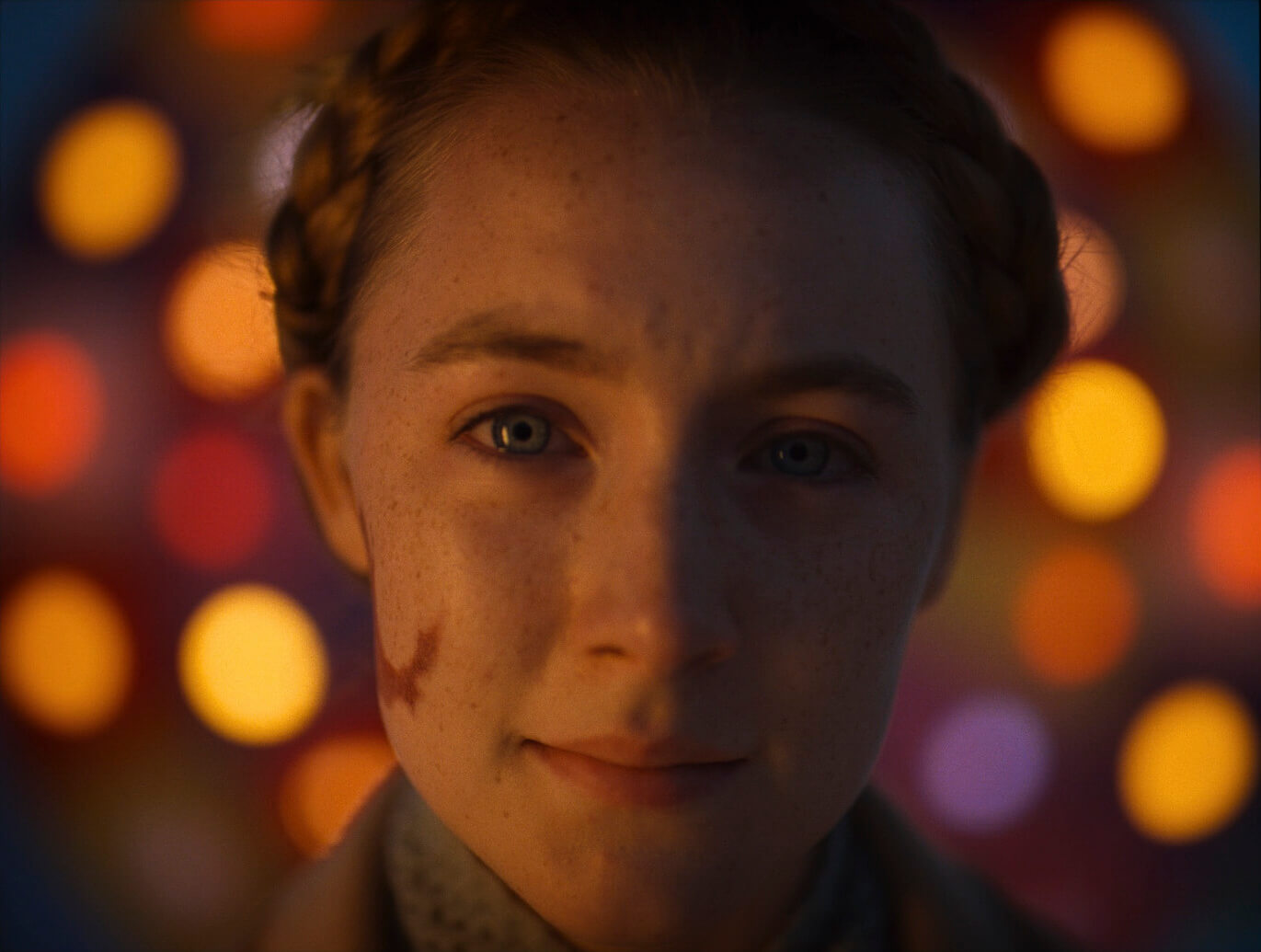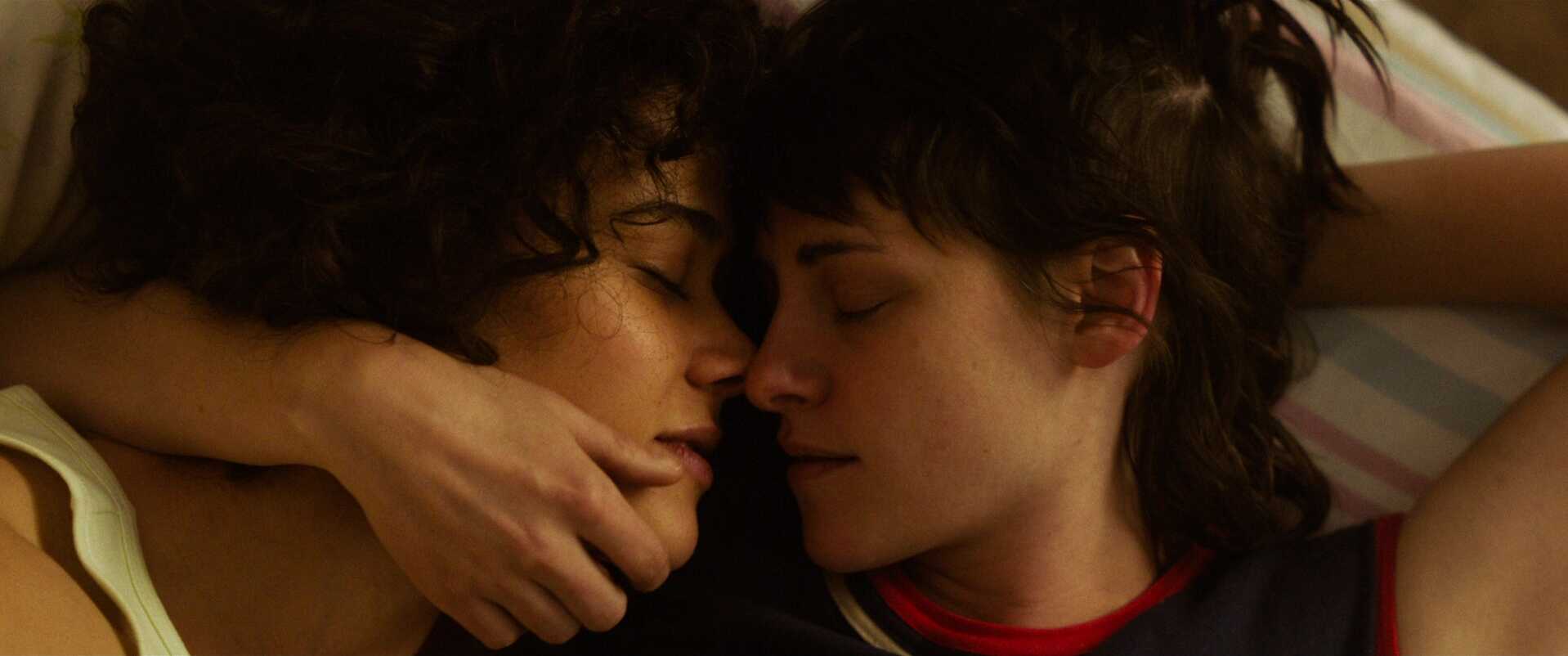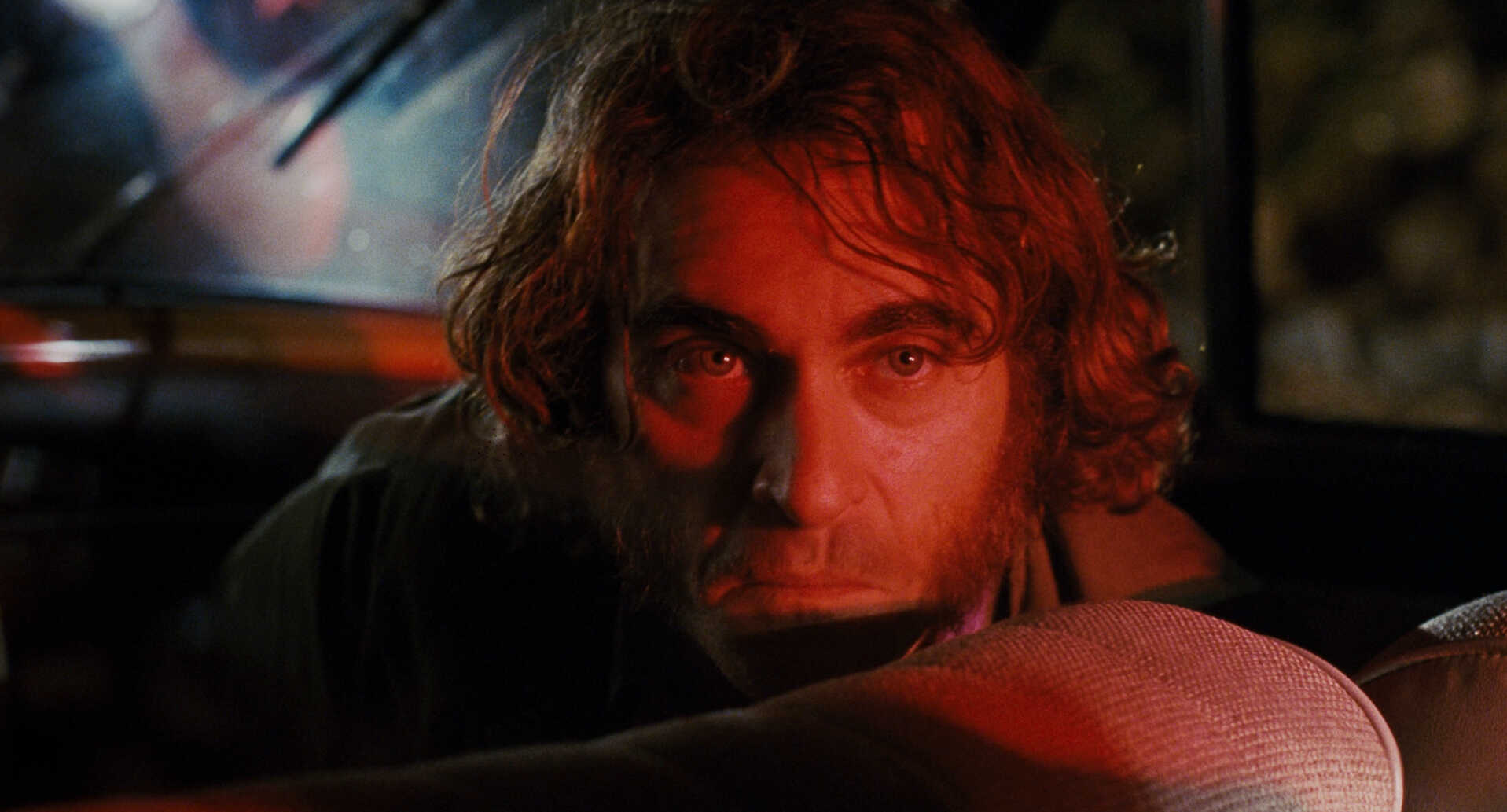Close up shot Definition
What is a close up shot in film?
A close up shot is when the camera frames the subject's full face and head. The bottom of the frame will near the bottom of the neck with the top of the frame just above the head. As we will see, there is a specific difference between an extreme close up, a close up, and a medium close up. The close up is commonly used to focus on the character and their emotions.
For more, read our full breakdown of the close up shot, including examples that illustrate the various functions.
Before we dive in the close up shot and everything it can do, let's start with some examples to familiarize ourselves with this type of camera shot. Open this visual gallery of high angle shots to see the variety and their functions firsthand.
Meanings & Purpose
Close up shot examples
The close up shot in film is an important one in terms of film language. Similarly to the extreme close up, they represent the pinnacle of connection to a character. When we want to feel what they feel most strongly, the close up shot is the way to go. That being said, they should be used sparingly so when they do appear, they have the most impact.
Here are just a few of the most common applications and functions.
Character empathy
Moments of realization
Emotional peaks
Breaking the fourth wall
Usages
What are close up shots used for?
The close up shot is used for many situations but the core purpose is to engage the audience as directly as possible with the character in that moment. What are they thinking or feeling? What realization did they just have? What decision are they about to make? The close up shot has a lot of potential and power in this regard but should be reserved for the most important moments — if every shot in a scene is a close up, they might lose their effectiveness.
Let's look at some specific scenarios where a close up shot might work best.
High emotions
A character experiences an emotional peak, and the audience is given an intimate view of their face, where we can understand and empathize with them.
Character focus
By cropping out the environment around the characters, we help remove those distractions for the audience so we can give them our full attention.
Intimacy
Close up shots are ideal for intimate moments between characters, whether shot as singles or as two-shots, allowing the audience to share that intimacy.
Thought process
Whatever mental process a character is undergoing, we have a front row view. This is particularly effective during a major realization or decision.
Qualities
Close up vs medium close up
The difference between a close up shot and a medium close up shot is narrow. The deciding factor is where the bottom of the frame lands on the character's body. A close up shot would capture the character from the neck or shoulders up. If we can see the top of their chest, this would considered more of a medium close up.
Close up vs extreme close up
It can be similarly difficult to differentiate between a close up and an extreme close up. Whereas a close up will capture the entire face and head, the extreme close up will only focus on a portion — perhaps just the face cropping out the top of the head or down to specifics like the eyes or mouth.
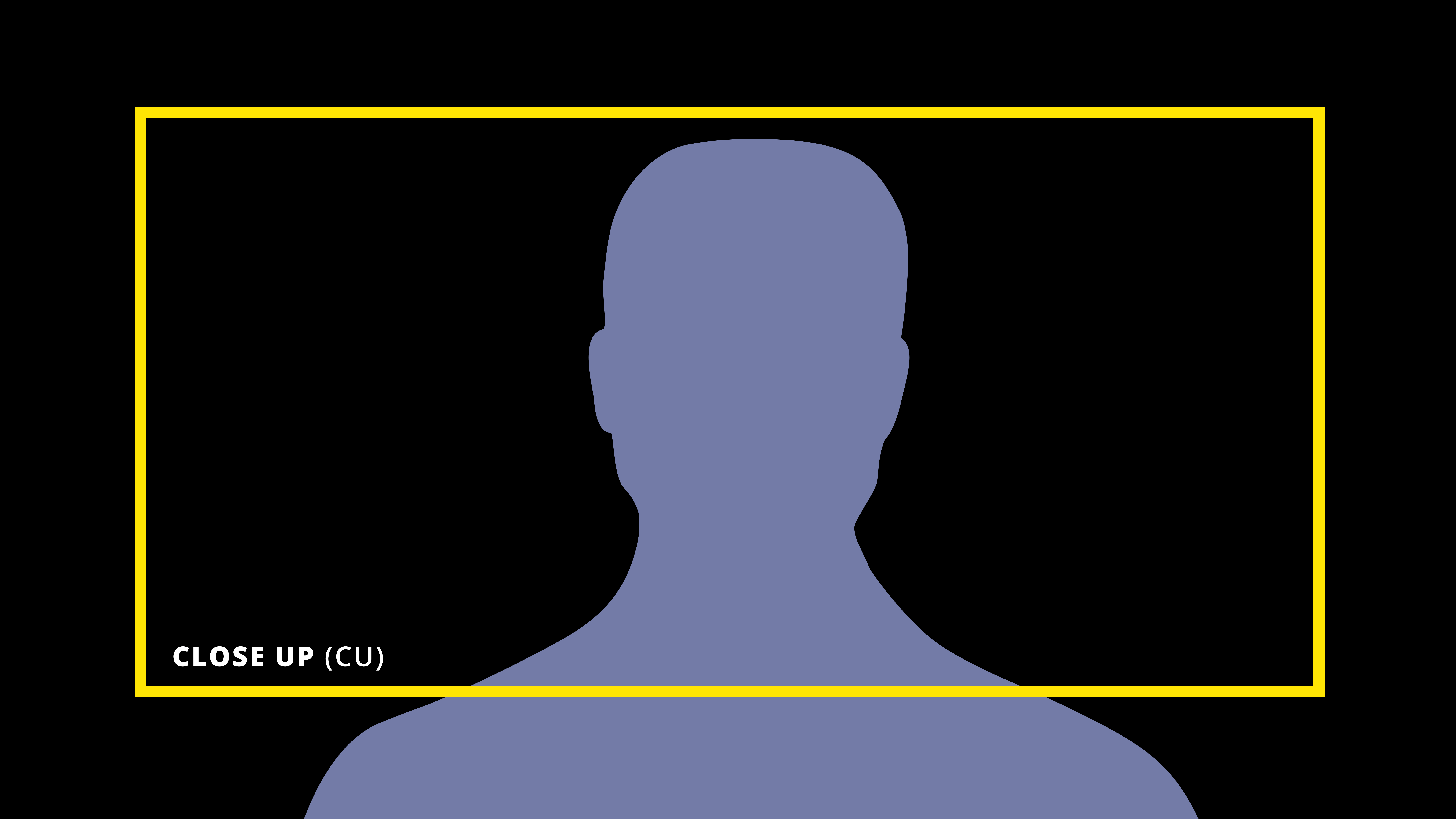
Case Study
Shot listing a close up
To get a more filmmaker's understanding of how to use a close up, let's look at a specific close up example. In Get Out, the scene between Chris and Missy builds slow tension.
Click the shot list below, to see the full scene broken down, and ask yourself what the close up shot communicates to a viewer.
There is obviously more than one way to use a close up shot. In fact, there are many.
Let's dive into the creative applications of a close up when paired with other directing and cinematography choices.
Unique Pairings
What do close up shots do when paired with another camera technique?
How to combine the close up shot
As you know, there are many camera techniques, each with their own unique properties and effects. In isolation, they work just fine. But in combination, these camera techniques can take on more nuanced and effective qualities. Let's see what happens when you combine the close up shot with the following camera techniques.
- Push: Combined with a push, a close up shot can build tension or emphasize a character's reaction.
- Wide Angle Lens: The wide angle close up creates facial distortions for a more stylized and dramatic presentation.
- Dutch Angle: With a Dutch angle, a close up shot can feel more destabilized, like the character is imbalanced or stressed.
- Zoom: Similar to the push, a zoom into a close up gradually amplifies the effect. A zoom out from a close up has the opposite effect.
- High Angle: A character looking up into a close up can be used for moments of wonder, a feeling of freedom, or a divine connection.
- Low Angle: Looking up at a character in close up gives them extra power or importance.
- Shallow Focus: To put even more attention on the character, shallow focus helps eliminate any potential distractions around them.
- Rack Focus: Pulling focus between two subjects helps create a connection between them.
- Profile Shot: A close up shot in profile is often used in moments of confrontation and paired with a similar reverse composition.
Frequently asked questions about the close up shot
A close up shot frames the subject so that the entire head and face is visible, from above the head down to the neck and shoulders.
Close up shots are used for many reasons but the most common are to engage with a character directly, to emphasize their current emotional state, to register a moment of realization or decision, or to eliminate background elements that might distract the audience.
Close up shots are important because they provide a direct and substantial connection to a character. They are ideal to create intimacy or mark an emotional peak. This helps the audience engage and empathize with the character more than other sizes like medium and wide shots.
There are a few lens options for close up shots depending on the desired look you're going for. A longer lens (e.g., 50mm and above) can flatten the face and create a narrower focus on the subject. A shorter lens (e.g., 35mm and below) will widen the face and capture more environment around the subject.
Shooting a close up shot is very simple:
- Decide how you want the close up to look.
- Shorter lenses tend to squash the facial features while longer lenses tend to flatten them.
- Find the ideal lens and proximity between camera and subject.
- Now you're ready to record.
